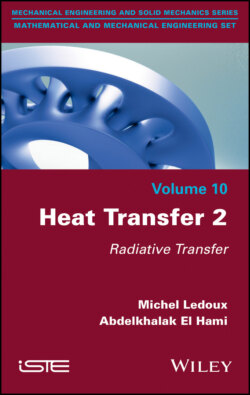Читать книгу Heat Transfer 2 - Bouchaib Radi, Ghias Kharmanda, Michel Ledoux - Страница 9
Оглавление
Preface
Thermal science is to thermodynamics as decree is to law. It answers the following question – which all good leaders must (or should) ask themselves whenever they have an “idea”: “How would this work in practice?”. In a way, thermal science “implements” thermodynamics, of which it is a branch. A thermodynamics specialist is a kind of energy economist. Applying the first principle, they create a “grocery store”. With the second principle, they talk about the quality of their products. I add or remove heat from a source or work from a system. And the temperature, among other things, defines the quality of the energy for me.
But by what means do I take or do I give? Even calculations of elementary reversible transformations do not tell us by what process heat passes from a source to a system.
Thermal science specifies how, but “evacuates” work. If in a given problem related to, for example, a convector where an electrical energy (therefore in the “work” category) appears, it is immediately dissipated into heat by the Joule effect.
Three heat transfer modes can be identified: conduction and radiation – which can be seen separately, although they are often paired up – and convection, which is by nature an interaction of fluid mechanics and conduction.
Dividing the study of thermal science into three is the result of logic. Presenting this work in three volumes is somewhat arbitrary; in our opinion, however, this split was necessary in order to keep the volumes in the collection a reasonable size.
This is Volume 2 of a collection of problems on thermal transfer, dedicated to radiation and digital approaches to transfer. Even though it is primarily a collection of exercises, a great deal of attention is focused on lessons. For the most part, the work is a first introduction to the thermal calculation of practical devices, which may be enough in itself. For subsequent calculations, the reader will still have to turn to specialist works or encyclopedias available in the field of thermics.
In Chapter 1, after a brief historical background, we summarize the vital notions of electromagnetic radiation and how they are written. The emphasis in this book is on the aspect of energy: the notions of photometry prove indispensable at this stage of exploration.
At the heart of studying radiation, Chapter 2 focuses on calculating luminances, relying on black body laws (Planck’s law; Rayleigh–Jeans and Wien approximations) and its derivatives: Stefan–Boltzmann laws and Wien laws. For evaluating a fraction of total emittance radiated in a spectral band, the function proves vital.
Chapter 3 tackles these interactions between a light flux and a material medium, a fundamental subject in any practical calculation of radiation: the phenomena of emission, absorption, transmission, etc., as well as the Kirchhoff law, emissivity, absorption coefficient, etc.
Chapter 4 presents the general notions on reciprocal radiation from several surfaces. We distinguish total influence and reciprocal radiation from finite surfaces. This subject is central in particular to the calculation of ovens. Here, we should restrict ourselves to notions, returning to specialist works for application by professionals working with ovens.
Solving a radiation problem often involves knowing and understanding the essence of the corresponding lessons. It is therefore not so easy to produce (interesting) problems that are limited to only being a paragraph long. This is why we were led to focus in Chapter 5 on the essence of exercises dedicated to radiation and coupled transfers.
In a domain where digital methods are becoming the rule for complex situations, it seems important to reserve a particular place for “monitoring” analytical approaches. In addition to their usefulness in understanding this domain, they offer the reader a precious tool for making calculations “on the back of an envelope”.
Finally, Chapter 6 introduces the reader to a digital approach for different transfer modes. The general problem of modeling is tackled here and examples of processing using ANSYS are presented.
The Appendix covers the tabulations of GO−λT functions whose practical importance emerges from the problems.
December 2020
